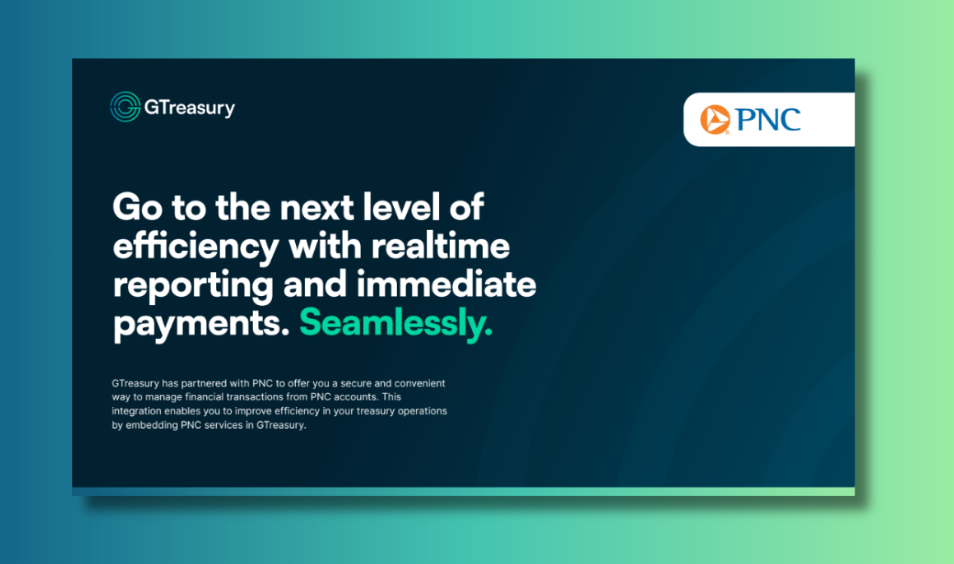How are Modern Treasury Teams Using AI Cash Forecasting?
.jpg)
.jpg)
Finance teams at leading organizations are transforming how they approach cash forecasting. Rather than relying solely on spreadsheet models and manual analysis, treasury departments are integrating AI tools that change daily workflows and decision-making processes.
This adoption stems from a practical need: traditional forecasting methods consume significant time while often failing to provide the strategic insights CFOs and treasurers need. Modern AI applications can address these gaps by automating routine tasks and identifying patterns that manual analysis might miss.
Automating Variance Analysis
Treasury teams are using AI to eliminate hours of manual work comparing forecasts to actuals. Traditional variance analysis requires pulling data from multiple systems, identifying discrepancies, and investigating causes across business units and regions.
AI-powered systems now handle this automatically. When actual cash balances diverge from projections, the technology identifies which business units, cash categories, or time periods drove the variance. Instead of coordinating across departments to explain a $2 million shortfall, analysts now receive automated breakdowns showing specific regional and operational drivers.
Generating Executive-Level Reporting
Modern treasury teams are leveraging AI to produce board-ready narratives and management commentary. The technology converts raw variance data into natural-language explanations that executives can understand without diving into detailed spreadsheets.
Rather than spending days preparing commentary for quarterly board presentations, finance teams generate professional reports that explain performance against forecast, highlight significant variances, and provide context about underlying drivers. These AI-generated narratives maintain consistency in reporting while freeing analysts to focus on recommendations rather than documentation.
Detecting Patterns and Improving Accuracy
AI systems can identify patterns across time periods, regions, and customer segments that manual reviews might overlook. Treasury teams are using this capability to spot systematic forecasting issues before they become bigger issues.
For example, if a particular business unit consistently under-forecasts cash outflows by 8-12% over multiple quarters, AI can flag this trend and calculate the cumulative impact on liquidity planning. As treasury teams add commentary or corrections, the AI then incorporates this information to improve future analysis to make forecast recommendations more tailored to an organization's specific cash flow drivers.
Supporting Real-Time Risk Management
Modern AI applications provide treasury teams with proactive alerts about forecast deviations before they affect liquidity planning. Rather than discovering cash shortfalls during weekly reviews, finance leaders receive notifications as soon as significant shifts occur.
Teams configure these alerts based on their specific risk thresholds and reporting calendars. This real-time visibility allows treasurers to take corrective action faster, whether that means accelerating collections, delaying planned payments, or adjusting credit facility draws.
GTreasury's GSmart Forecast Insights
GSmart Forecast Insights was purpose-built specifically for treasury operations. The tool addresses these challenges by automating variance analysis, generating executive summaries in under seconds, and providing forecast refinement recommendations based on cash inflow and outflow patterns.
Unlike generic analytics platforms, GSmart Forecast Insights operates within the GTreasury platform, so finance teams can generate insights without leaving their TMS. The variance analysis tool identifies key drivers across cash categories and business units, while the executive summary generator produces natural-language narratives explaining actual versus forecast performance.
The system includes smart commentary integration, which learns from finance team notes and annotations to refine future summaries. Treasury teams can also configure automated insight delivery through AI agent scheduling to align AI-generated reports with their existing reporting calendar.
For organizations looking to move beyond manual spreadsheet analysis, GSmart Forecast Insights provides purpose-built AI capabilities designed specifically for treasury and cash flow forecasting workflows.
Schedule a consultation with our team of cash forecasting experts today to get started.
How are Modern Treasury Teams Using AI Cash Forecasting?
Finance teams at leading organizations are transforming how they approach cash forecasting. Rather than relying solely on spreadsheet models and manual analysis, treasury departments are integrating AI tools that change daily workflows and decision-making processes.
This adoption stems from a practical need: traditional forecasting methods consume significant time while often failing to provide the strategic insights CFOs and treasurers need. Modern AI applications can address these gaps by automating routine tasks and identifying patterns that manual analysis might miss.
Automating Variance Analysis
Treasury teams are using AI to eliminate hours of manual work comparing forecasts to actuals. Traditional variance analysis requires pulling data from multiple systems, identifying discrepancies, and investigating causes across business units and regions.
AI-powered systems now handle this automatically. When actual cash balances diverge from projections, the technology identifies which business units, cash categories, or time periods drove the variance. Instead of coordinating across departments to explain a $2 million shortfall, analysts now receive automated breakdowns showing specific regional and operational drivers.
Generating Executive-Level Reporting
Modern treasury teams are leveraging AI to produce board-ready narratives and management commentary. The technology converts raw variance data into natural-language explanations that executives can understand without diving into detailed spreadsheets.
Rather than spending days preparing commentary for quarterly board presentations, finance teams generate professional reports that explain performance against forecast, highlight significant variances, and provide context about underlying drivers. These AI-generated narratives maintain consistency in reporting while freeing analysts to focus on recommendations rather than documentation.
Detecting Patterns and Improving Accuracy
AI systems can identify patterns across time periods, regions, and customer segments that manual reviews might overlook. Treasury teams are using this capability to spot systematic forecasting issues before they become bigger issues.
For example, if a particular business unit consistently under-forecasts cash outflows by 8-12% over multiple quarters, AI can flag this trend and calculate the cumulative impact on liquidity planning. As treasury teams add commentary or corrections, the AI then incorporates this information to improve future analysis to make forecast recommendations more tailored to an organization's specific cash flow drivers.
Supporting Real-Time Risk Management
Modern AI applications provide treasury teams with proactive alerts about forecast deviations before they affect liquidity planning. Rather than discovering cash shortfalls during weekly reviews, finance leaders receive notifications as soon as significant shifts occur.
Teams configure these alerts based on their specific risk thresholds and reporting calendars. This real-time visibility allows treasurers to take corrective action faster, whether that means accelerating collections, delaying planned payments, or adjusting credit facility draws.
GTreasury's GSmart Forecast Insights
GSmart Forecast Insights was purpose-built specifically for treasury operations. The tool addresses these challenges by automating variance analysis, generating executive summaries in under seconds, and providing forecast refinement recommendations based on cash inflow and outflow patterns.
Unlike generic analytics platforms, GSmart Forecast Insights operates within the GTreasury platform, so finance teams can generate insights without leaving their TMS. The variance analysis tool identifies key drivers across cash categories and business units, while the executive summary generator produces natural-language narratives explaining actual versus forecast performance.
The system includes smart commentary integration, which learns from finance team notes and annotations to refine future summaries. Treasury teams can also configure automated insight delivery through AI agent scheduling to align AI-generated reports with their existing reporting calendar.
For organizations looking to move beyond manual spreadsheet analysis, GSmart Forecast Insights provides purpose-built AI capabilities designed specifically for treasury and cash flow forecasting workflows.
Schedule a consultation with our team of cash forecasting experts today to get started.
.jpg)
Ver Tesorería en acción
Conéctese hoy mismo con expertos de apoyo, soluciones integrales y posibilidades sin explotar.






























.jpg)
.png)


























.png)




.jpeg)

.jpeg)










.jpeg)


.jpeg)







.jpeg)


.jpeg)









.jpeg)


















.png)


